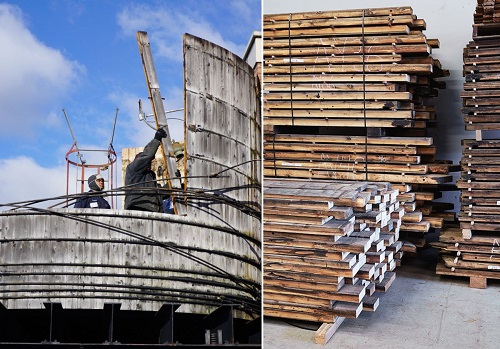 Friday, April 26, 2024
Friday, April 26, 2024  Friday, April 26, 2024
Friday, April 26, 2024 
Takumi Osawa kneels on the narrow balcony of a wooden house outside Tokyo and describes how, 140 years ago, workers would have hoisted baskets of mulberry leaves to the second floor to feed silkworms. When they ate, it sounded like rain.
Known in Japan as minka, these locally crafted structures with characteristic pitched roofs were built for hundreds of years to accommodate farmers, artisans and merchants. This one was originally constructed in 1879 and housed a family on the first floor who tended silkworms on the second and third. Minka are typically designed like an interlocking puzzle, without nails or screws, which allowed Osawa and a team of craftsmen to take the building apart, move it about 90 kilometers (56 miles) east and reassemble it closer to Tokyo, where a couple now live in it.
The number of empty homes in Japan is rising as the population shrinks and younger generations gravitate toward the city. Government data suggests as many as 8 million houses, many built during a post-World War II construction boom that lasted into the 1980s, now lie unoccupied.
In the mountains of western and northern Honshu, Japan’s main island, abandoned minka dot rural roads and out-of-the-way villages. It takes only a few winters for the roofs to cave in due to heavy snowfall, making them targets for demolition. So, in 1997, Osawa set up an organization to find, relocate and restore them before they become uninhabitable.